The Marin Headlands is designed as a do-it-all gravel bike for dirt, roads, singletrack trails and everything in between.
Mountain bikers dabbling in gravel riding will feel right at home with its upright geometry, paired with a short stem and wide handlebar. The Headlands is also designed to excel at bikepacking, with the frameset teeming in eyelets.
In testing, I’ve found the bike to deliver, coping well with everything that’s been thrown at it. Although its geometry may seem quirky at first, it didn’t take long for it to grow on me.
Marin Headlands 2 frame details
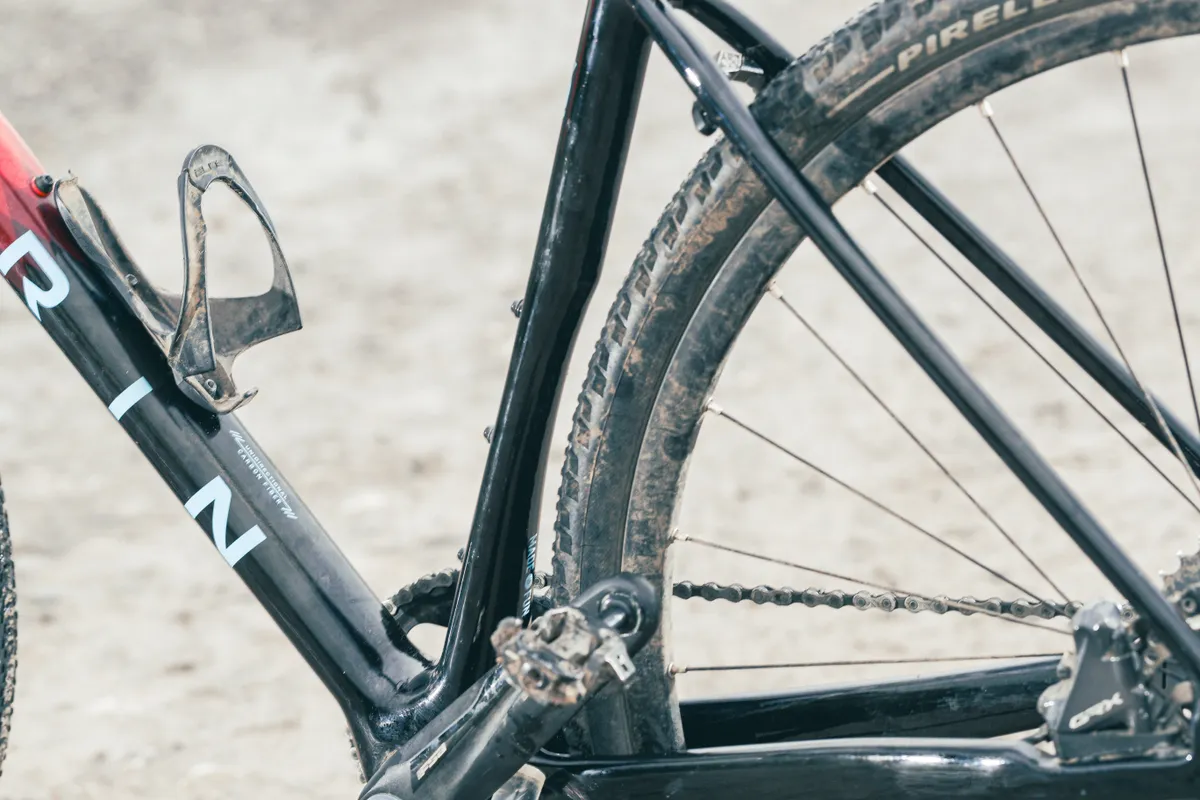
The Headlands cuts a distinctive silhouette with its short, stubby stem and its reasonably low-slung top tube.
It’s constructed from unidirectional carbon fibre, with a claimed frame weight of 1,390g in a size 56cm (painted, including frame bosses and grommets).
The fork is claimed to weigh 510g, the steerer cut to allow for 30mm of headset spacers above or below the stem.
Although you might assume from a brief glance that the Headlands is a straightforward carbon transplant of the brand’s Gestalt X aluminium gravel bike, you’d be mistaken. Both take a mountain biking approach in their design, but they sport different geometries and the Headlands has significantly more mounting points.
You won’t find a round tube in sight on the Headlands – every tube has an oval profile, which Marin says is to balance strength and compliance.
Both the down and top tubes are relatively boxy, with the top tube tapering a little as it reaches the seat tube junction.
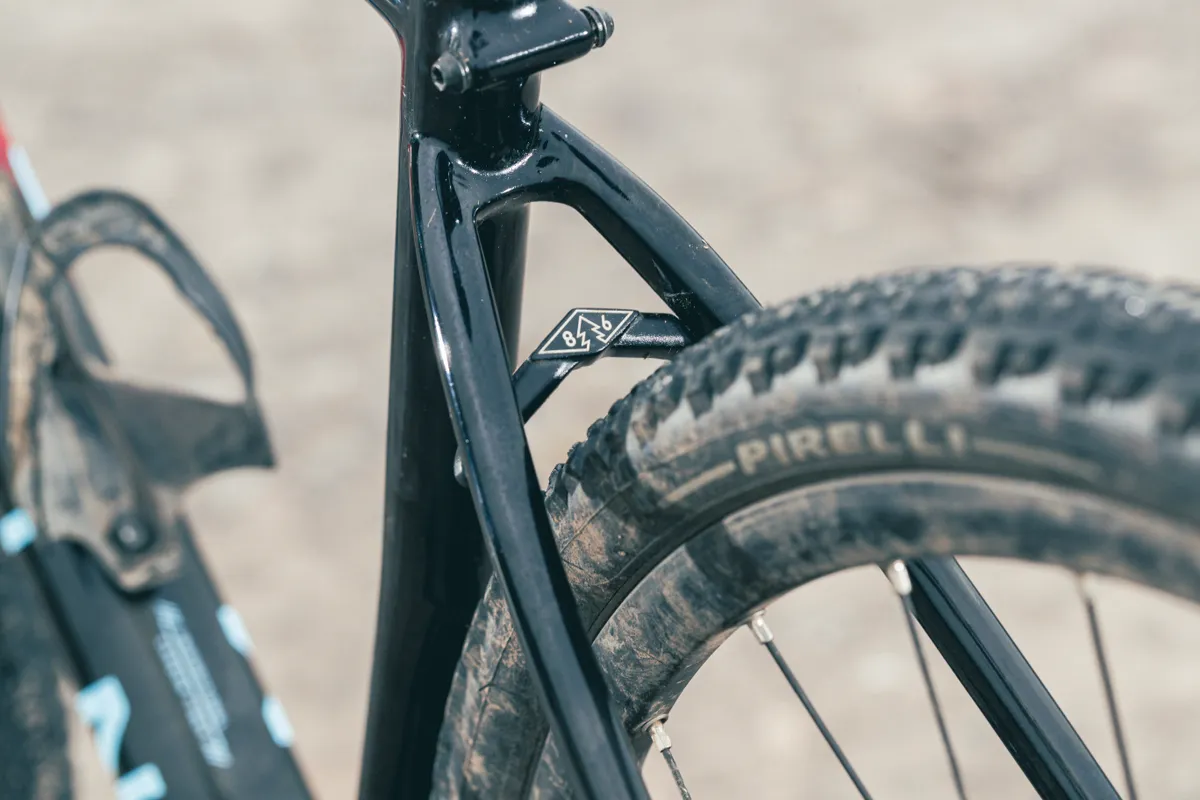
Speaking of the seat tube, there’s a slight growth at its end to accept a pannier rack. It’s also heavily sculpted where the rear wheel would otherwise meet to shed debris. That funky seat tube means the Headlands can only be run with a 1x drivetrain.
The seatstays are ever so slightly dropped and there’s a lot of exposed seatpost to promote flex.
The chainstays are also striking – Marin disregards the common approach of dropping them to increase tyre clearance, instead simply making the tube thinner where they meet the bottom bracket junction.
A similar profile can be found with the fork blades, which are thin at the dropout and become stout as they reach the head tube.
All in, it’s a distinctive-looking gravel bike that sets itself apart from the crowd and I rather appreciate the left-field design.
The Headlands refreshingly eschews the common trend for front-end integration, with exposed cables and hoses running externally until they are routed internally through the down tube.
The cables and hose then exit at the base of the bottom bracket junction before running externally to their respective locations. Marin says this is for ease of maintenance, particularly if you have any mechanicals while out on an adventure.
The Headlands frameset can accept up to a 45mm gravel bike tyre on a 700c wheel, and it’s compatible with 650b wheels up to 50mm. That’s on the conservative side, with many more adventure-focused bikes accepting gravel tyres upwards of 50mm wide.
The Headlands is festooned with mounting points for almost everything you could ever wish to carry on a bikepacking trip. There are mounts for multiple bottle cages, frame bags, top tube bags, fork bags – the works.
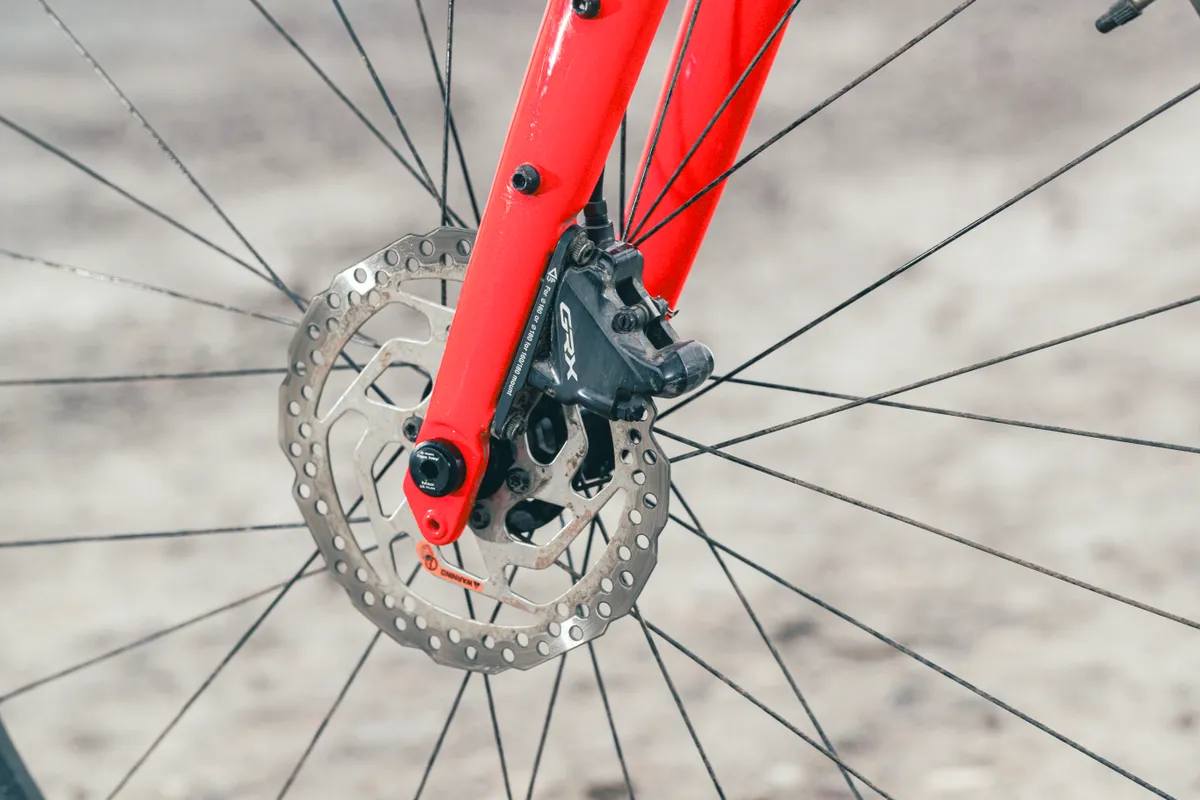
The forks have triple cage mounts and the frame lends itself well to custom bags with mounting inside the front triangle.
A removable seatstay brace makes it easy to add mudguards if you wish and there are even pannier rack mounts.
The only thing I can think of that the Headlands might be missing, is internal routing for a dynamo.
The Headlands runs on a BSA threaded bottom bracket and features a common 1 ⅛ to 1.5in headset standard.
The bike shares derailleur hangers with Marin’s other 142x12mm thru-axle gravel bikes, rejecting a SRAM UDH dropout.
Marin says it considered incorporating this in the Headlands' conception but didn’t deem it worth including at the time.
Bear in mind SRAM’s T-Type Transmission drivetrains only hit the market earlier in 2023 and the Headlands range was launched in 2020. I suspect it’s something Marin may reconsider in the next generation.
Marin Headlands 2 geometry
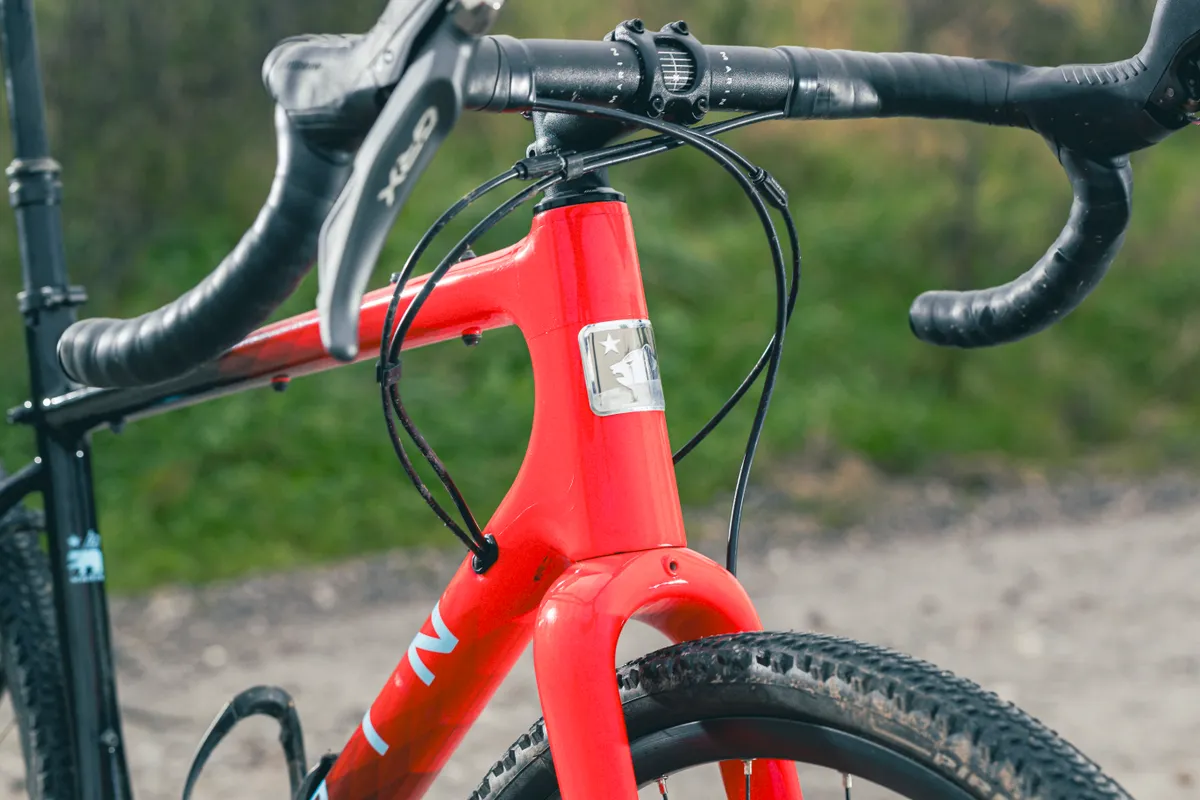
The Headlands’ geometry is pretty fascinating and only paddles in the mountain biking geometry pool rather than diving right in. The bike effectively blends a tall and upright front end with a relatively short reach.
Marin says it designed the geometry for “comfortable long-distance riding on a variety of surfaces, with or without the extra weight of gear on the bike”.
The BMC URS and YT Szepter are other examples of gravel bikes with more than a heavy dose of MTB infusion.
The Headlands’ stack is reasonably tall at 600.8mm for a size 56cm, with the reach a compact 386.4mm. The reaches on the BMC URS and YT Szepter are significantly longer at 419mm and 407mm respectively.
The 71.5-degree head tube angle is steeper than the URS’ 70 degrees, or the even slacker 69.4 degrees on the Szepter.
The Headlands' chainstays are particularly short at 420mm, aimed at delivering snappy acceleration. The URS and Szepter are also short at 425mm each, with more traditional gravel bikes, such as the Niner RLT 9 RDO and Trek Checkpoint longer at 430 and 435mm respectively, ostensibly for increased stability.
The short 510mm seat tube allows plenty of exposed seatpost for compliance, and so Marin can fit a longer-travel dropper seatpost.
The stock 56cm build comes with a very short 60mm stem (BMC specs 80mm on an equivalent-sized URS and YT opts for 70mm) and a 44cm flared handlebar.
On more typical adventure-oriented gravel bikes, I almost always prefer to run a narrow 40cm bar, as I do on the road because my arms feel splayed on anything wider.
I’m 180cm / 5ft 11in tall and tested a size 56cm. Although the short reach felt rather alien at first, by the end of the first ride I was converted.
| Frame size (cm) | 49 | 52 | 54 | 56 | 58 | 60 |
|---|---|---|---|---|---|---|
| Head tube angle (degrees) | 70.5 | 71 | 71.5 | 71.5 | 71.5 | 71.5 |
| Head tube length (mm) | 120 | 135 | 150 | 170 | 190 | 210 |
| Seat tube angle (degrees) | 74.5 | 74 | 73.5 | 73.5 | 73.5 | 73.5 |
| Seat tube length (mm) | 440 | 470 | 490 | 510 | 530 | 550 |
| Effective top tube length (mm) | 522 | 535 | 545 | 565 | 595 | 615 |
| Chainstay length (mm) | 420 | 420 | 420 | 420 | 420 | 420 |
| Wheelbase (mm) | 1,010.2 | 1,007.4 | 1,007.7 | 1,028.5 | 1,059.2 | 1,079.9 |
| Reach (mm) | 370 | 372.8 | 372.7 | 386.4 | 411.4 | 425.8 |
| Stack (mm) | 550.3 | 565.7 | 581.8 | 600.8 | 619.7 | 638.7 |
Marin Headlands 2 build
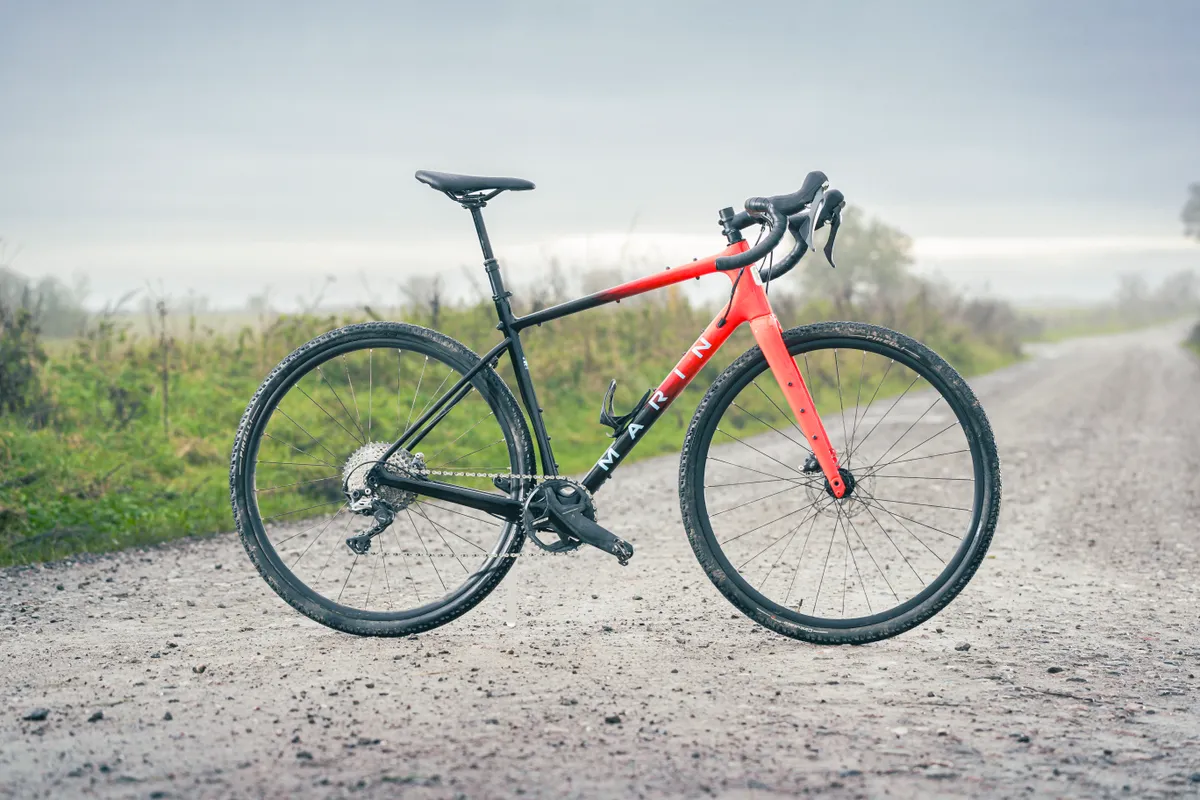
The Headlands 2 comes with a predominantly Shimano GRX RX-800 11-speed mechanical groupset.
There are some deviations though, with an FSA Gossamer Pro crankset, corresponding bottom bracket and a KMC X11 chain.
Marin specs a tall 42-tooth chainring (which is also the maximum size the frame is compatible with) and an 11-42t cassette.
160mm disc brake rotors are specced front and rear.
The bike runs on Marin’s own ‘Aluminium Double Wall’ rims with ‘Forged Aluminium Alloy’ hubs. They’re tubeless-compatible and sport a 21mm internal rim width. They're laced to the hubs by 28 spokes in a two-cross pattern.
Production models come with Vee Tire Co. G-Sport tyres, but my test bike had WTB Byway rubber. Marin says it has made some running spec changes due to supply chain issues and says the Byway is an equivalent substitute.

TranzX supplies the YSP38 dropper post – the fact it’s 27.2mm in diameter might mean it won’t play nicely with some bikepacking bag adaptors, as I found out on the eve of a trip.
I like that the left-hand GRX-800 lever blade is used to actuate the dropper post. In my view, there is nothing worse than an ugly ancillary lever mounted on drop handlebars, especially when wrapping handlebar tape.
The rest of the spec is own-brand, with an alloy handlebar sporting 16 degrees of flare, as well as Marin’s Beyond Road Concept Elite saddle and Shock Absorbing handlebar tape.
For the most part, I admired the paint scheme – a black-to-red fade that Marin calls ‘Roarange / Black and Blue’. The way in which the red fades into the black is cool, with the lines well masked. I’m still not sure the light blue graphics match the red though – I reckon white graphics would better contrast the black and red.
Marin offers two carbon models that share an identical frame, with the Headlands 1 retailing for £2,365 / $2,599 / €2,999 / AU$3,699.
While it, too, sports an 11-speed Shimano GRX groupset, it relies more on the brand’s second-rung GRX-600 componentry. The Headlands 1 also forgoes a dropper post.
The Trek Checkpoint ALR Driftless I tested alongside the Headlands is £100 cheaper, but steps down to an aluminium frame with a largely similar component spec.
A frameset is also available for £1,625 / $1,849 / €1,899 / AU$2,299.
On the scales, my 56cm test bike weighed in at 9.6kg.
Marin Headlands 2 performance
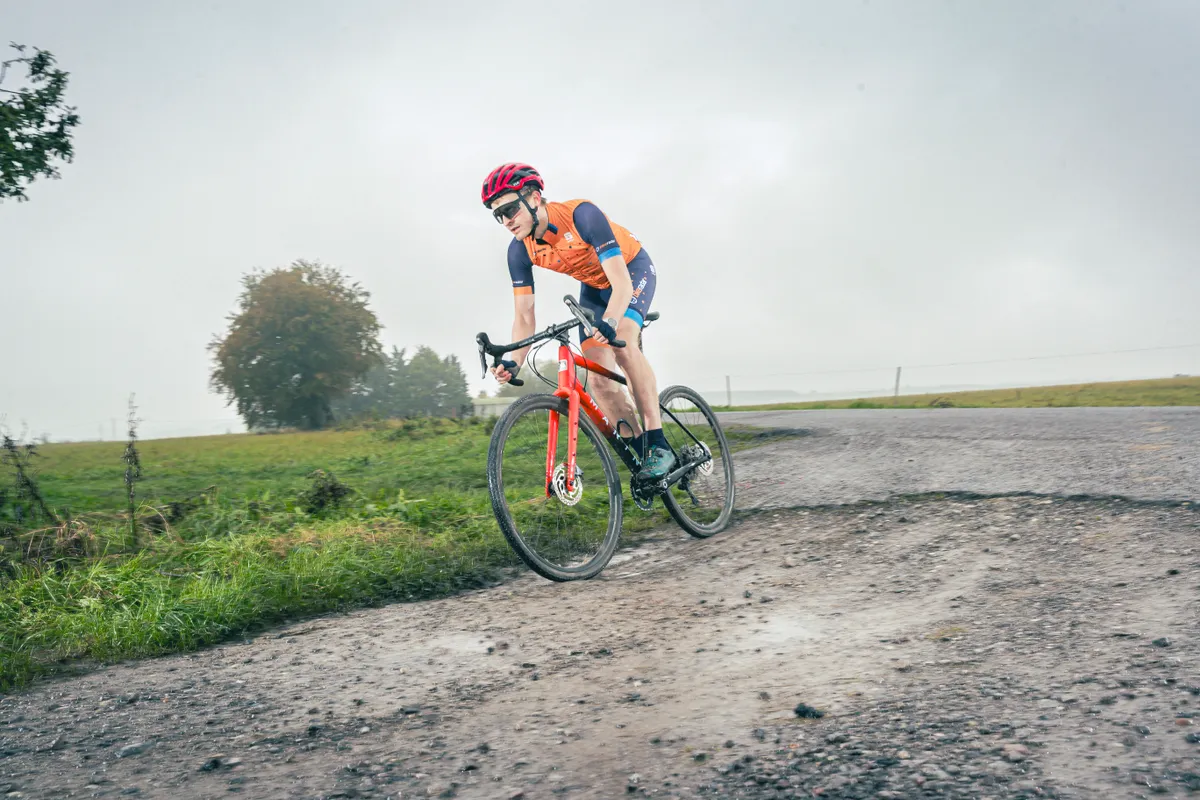
I tested the Marin Headlands over three months and clocked a little over 1,250km.
The bike was tested around the trails in and around Bristol in the south west of England, as well as some familiar Chiltern trails in the south east.
The Headlands was also my steed of choice for The Pictish Trail, a 750km bikepacking route from Dunnet Head (the most northerly point of the UK mainland) to Edinburgh.
Pre-test, I wasn’t sure the geometry was going to work, but the Headlands impressed from the off with its calm demeanour and upright position.
It’s really direct, the bike propelling forward with ease and the bottom bracket responding well under power with no discernible flex.
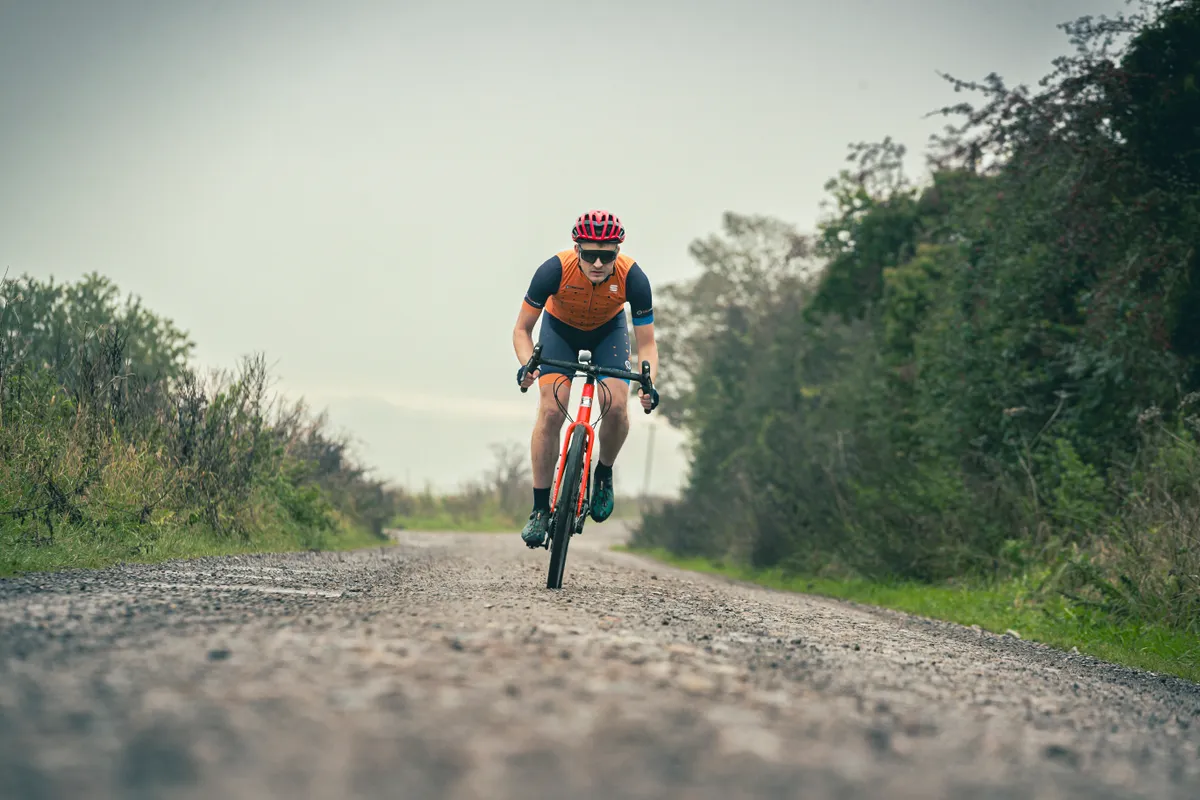
The Headlands isn’t the plushest option out there, given it relies on frame flex rather than any pivots or other gizmos, but I didn’t feel anything overly harsh transmit through the bars.
Crucially, after eight continuous days of bikepacking, I didn’t feel beaten up.
The fact there’s a dropper post doesn't help out as much as a carbon seatpost would in absorbing vibrations, and I wonder how much more of the sting one would remove.
When you’re not putting the power down, the Headlands is reassuringly predictable – I initially feared the short stem would lead to a wandering front end.
I also thought I might experience some toe overlap with the short front-centre, but this wasn’t the case.
The Headlands is a sprightly, if not the most urgent, climber, the carbon frame feeling taut when putting in some welly on ascents.
On descents, that dinky stem and dropper post mean you can get properly rowdy, although I found the steering a little quick for my tastes when the bike was unloaded.
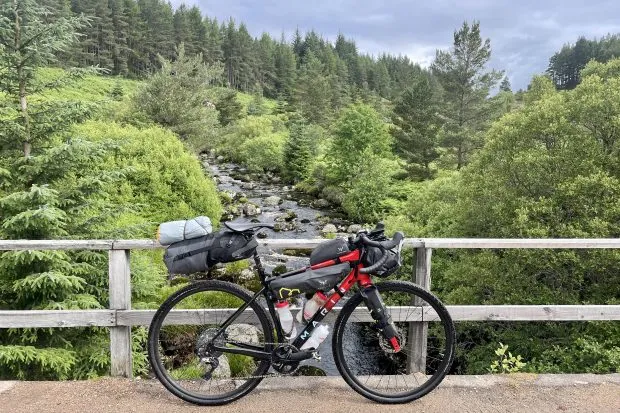
Bikepacking, however, is where the Headlands proved very composed and in its natural element.
With the bikepacking bags weighing the bike down, it still felt poised when ripping down loamy Scottish descents, and efficient when pedalling up the other side.
Moving onto the components, the Shimano GRX-800 groupset is a mostly excellent match for the Headlands, although some may find the gear ratios on the tough side.
The tall 42t chainring means climbs are a little more arduous than they could be. Both Campagnolo Ekar and SRAM XPLR eTap AXS systems offer a more climb-friendly range.
Shimano has recently announced its new 12-speed GRX mechanical groupset range, which incorporates a more generous 10-51t cassette. I hope this will be specced in future as this 11-speed incarnation is phased out.

Still, the shifting was crisp and I was pleased to see Marin use a genuine Shimano cable – it’s common to see brands use third-party cables, which can detract from the experience.
I’ve had hit-and-miss experiences with Shimano brakes, but I found the combination of the BR-RX810 caliper and the SM-RT26 disc brake rotor an excellent match. I didn’t experience any rub whatsoever through testing and they ran mostly quietly through my bikepacking trip, despite it raining every day.
Although Marin deviates to a KMC chain and FSA crankset, I didn’t notice a decline in shifting quality.
The FSA Gossamer Pro crankset is a little heavy though (746g actual weight for both arms, the wave washer and a spacer, compared to the 656g claimed weight of a Shimano GRX800 option), if that matters to you.
I’m not a big fan of the MegaExo bottom bracket because the unit requires a proprietary tool to remove it, adding cost for some home mechanics.
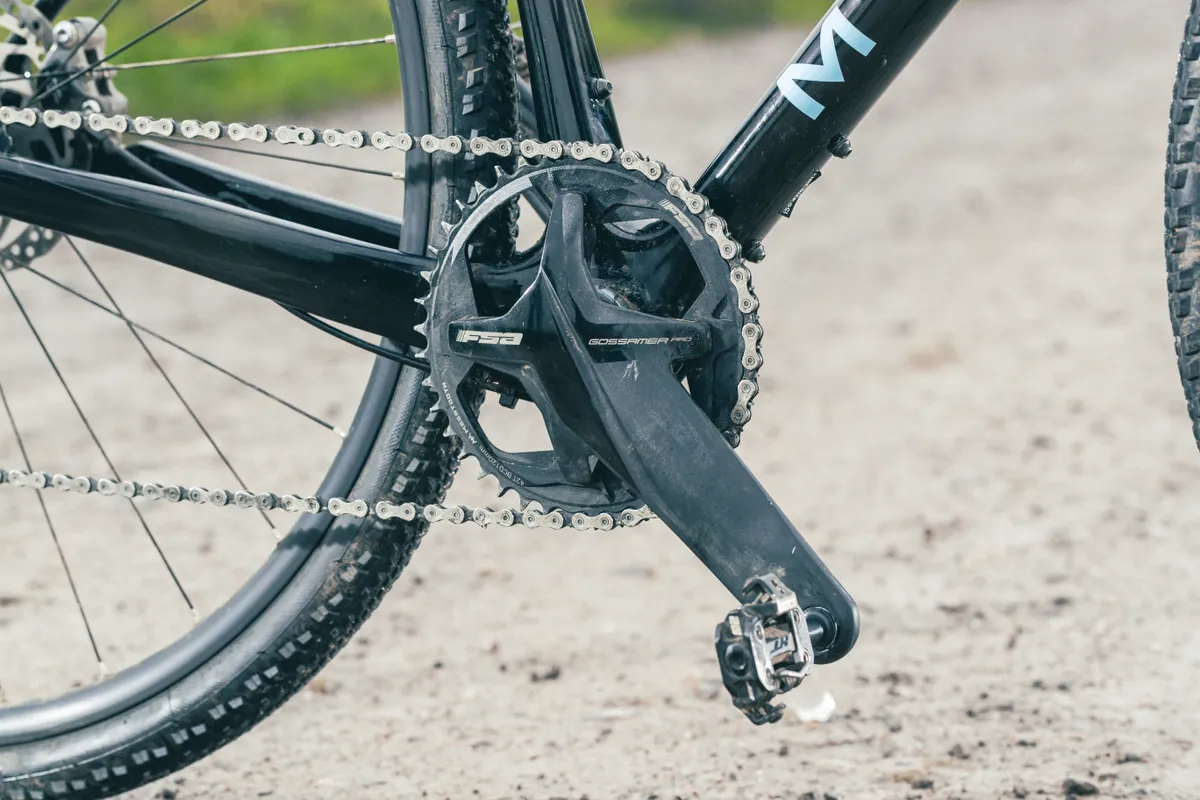
I was disappointed that the non-driveside bottom bracket bearing had worn completely by the end of the test period and would recommend upgrading to a more durable option once you’ve used the stock unit.
The wheels are unremarkable but remained true through testing. The eyeleted spoke holes and high spoke count mean they’d be a sturdy choice for the winter.
The 44mm-wide WTB Byway tyres the bike came with aren’t my favourite – while they feel fast on the road with their almost-slick centre tread, they’re not overly grippy on sloppy singletrack.
I quickly swapped them out for some Pirelli Cinturato Gravel RC tyres (as pictured), and had a much improved overall experience.
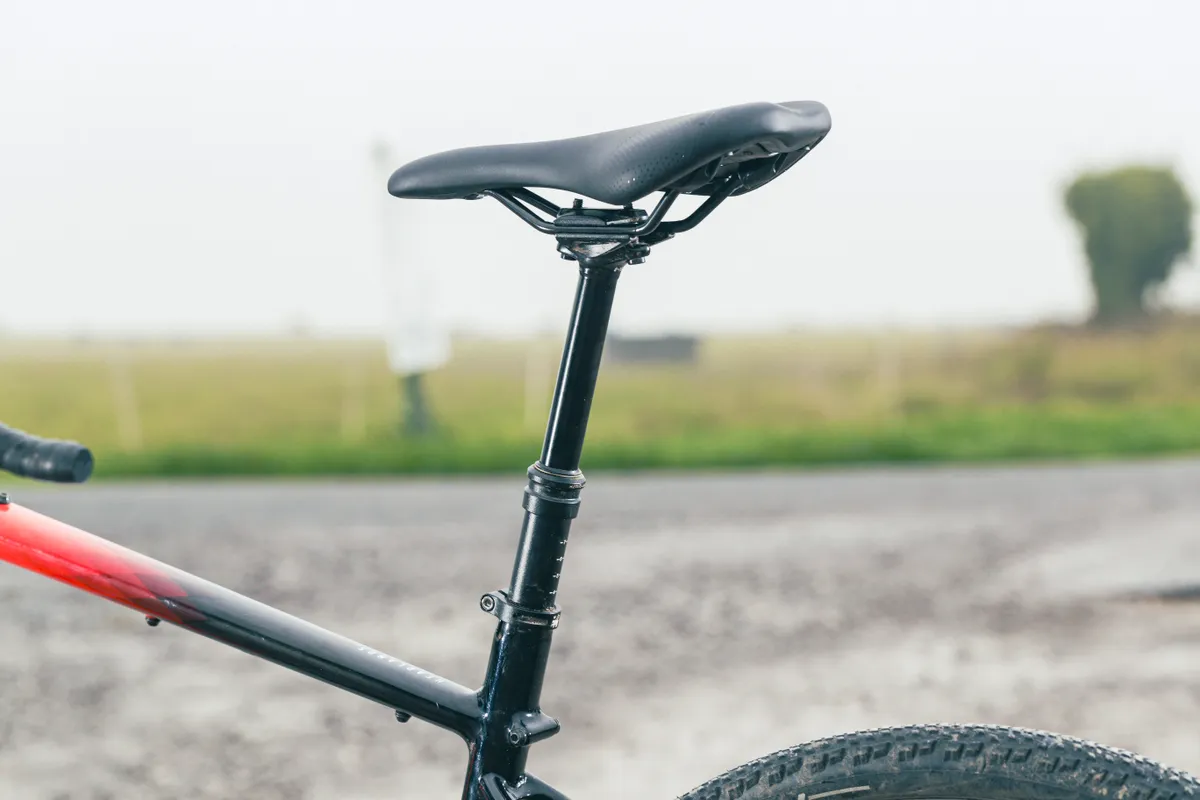
The TransX dropper post worked well throughout testing, although it developed some play. I really appreciated the long 105mm drop, enabling me to get the saddle out of the way when descending.
Most dropper posts on gravel bikes are typically of a shorter drop, and it made the 50mm travel on the Trek Checkpoint ALR 5 Driftless I tested alongside the Headlands seem paltry.
Outside of a reduction in compliance, a dropper post means mounting bikepacking bags is more difficult, given you need to run an adaptor.
I ditched the Marin Beyond Road Concept Elite saddle early in testing because I found it overly soft and the wrong shape for me, switching to my favoured Fabric Scoop. Saddle choice, as ever, is highly subjective.
While the internal cable routing ran quietly through testing, I’d prefer to see metal ports rather than the rubber plugs specced because they weren’t the most secure in holding the cables and hoses in place.
Marin Headlands bottom line
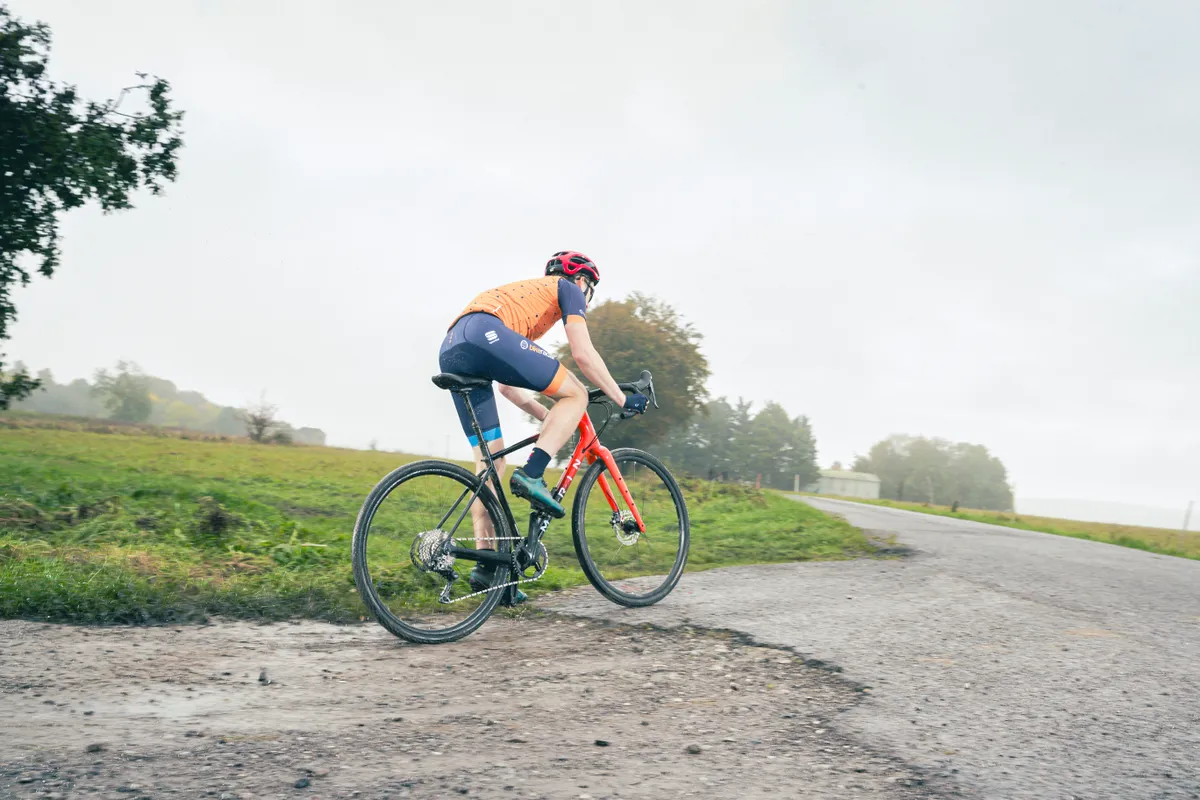
Despite what may seem like a hodgepodge geometry, the Headlands is a fantastic gravel bike with its mountain bike inspiration unlocking further off-road potential.
I really got on with the shorter, more upright geometry, and the bike balances its compliance with a comfortable position, and good ascending and descending abilities.
When fully loaded, the Headlands is in its element, happy to tackle any obstacle and go anywhere.
It also offers terrific value for money – packing a quality carbon frame with dependable components for £2,800.
Outside of perhaps the wheels and tyres (the wheels are still perfectly suitable for year-round riding), none of the components scream of needing to be upgraded immediately.
Provided you’re happy with the unconventional position, for any gravel riding short of racing, the Headlands 2 should go straight on your shortlist.
Product
| Brand | marin |
| Price | 4399.00 AUD,3499.00 EUR,2795.00 GBP,3099.00 USD |
| Weight | 9.6000, KILOGRAM (56) - Actual weight |
Features
| Fork | FSA Gossamer Pro, Megatooth 42T Chainring, BB386EVO Alloy Spindle |
| br_stem | Marin 3D Forged Alloy |
| br_chain | KMC X11 |
| br_frame | Unidirectional Carbon Beyond Road Platform, 1x Drivetrain Specific, 700c x 45mm/650B x 50mm Compatible, Flat Mount Disc, 142x12mm Thru-Axle, Internal Dropper Post Routing, Internal Housing Routing, Mudguard and Rear Carrier Mounting, Plentiful Gear Mounts |
| Tyres | WTB Byway, Distance Plus Compound, 700Cx44mm, TCS Tubeless Compatible |
| br_brakes | Shimano GRX Hydraulic Disc, 160mm rotor |
| br_cranks | FSA Gossamer Pro, Megatooth 42T Chainring, BB386EVO Alloy Spindle |
| br_saddle | Marin Beyond Road Concept Elite |
| br_wheels | Marin Aluminum Double Wall, 21mm Inner, 21mm Tall, Disc Specific, Tubeless Compatible on Forged Aluminum Alloy, Disc, 28H hubs |
| br_headset | FSA Orbit IS, Sealed Cartridge Bearings, 1 1/8” x 1 1/2” |
| br_shifter | Shimano GRX STX801, 1x11-Speed, Integrated Dropper Lever |
| br_cassette | Shimano CS-M8000, 11-speed, 11-42t |
| br_seatpost | TranzX YSP38 Dropper Post, 70mm/105mm Travel, 27.2mm |
| br_gripsTape | Marin Shock Absorbing Tape |
| br_handlebar | Marin Butted Alloy, Flat Top, Compact 12º Flared Drop, Flat Top |
| br_bottomBracket | BSA Threaded |
| br_availableSizes | 49, 52, 54, 56, 58, 60 |
| br_rearDerailleur | Shimano GRX RDX812 Shadow Plus w/ Clutch |
